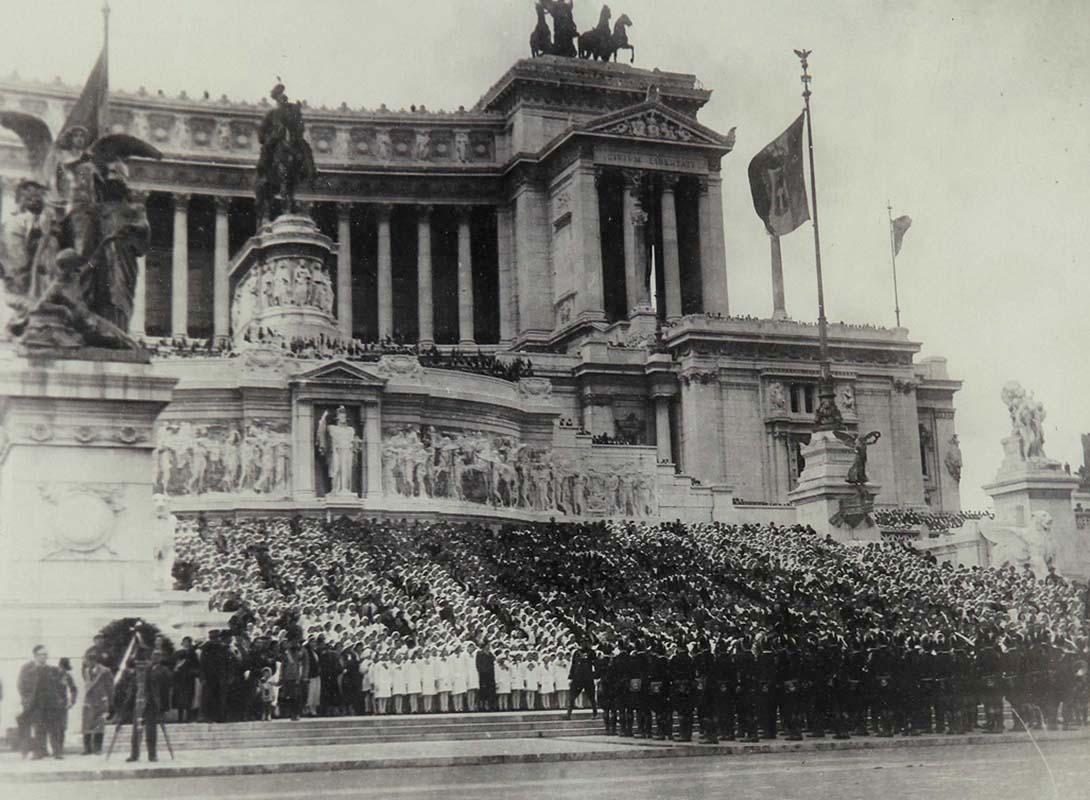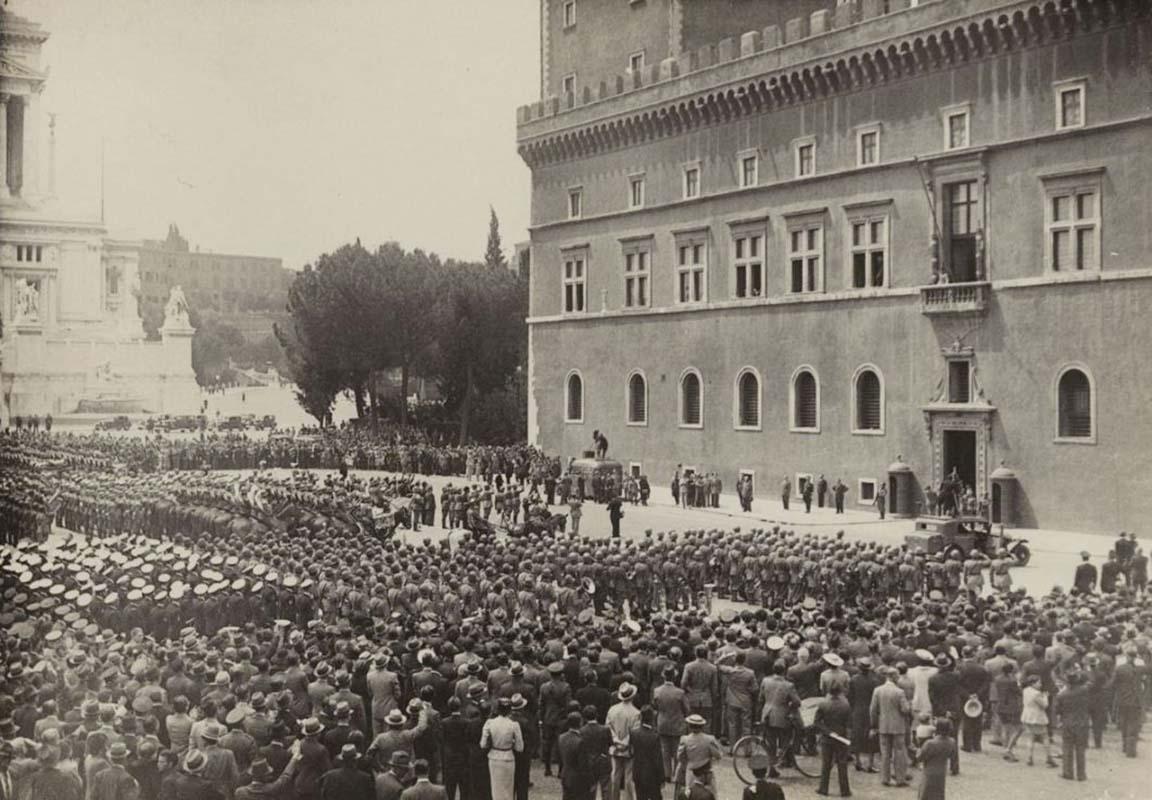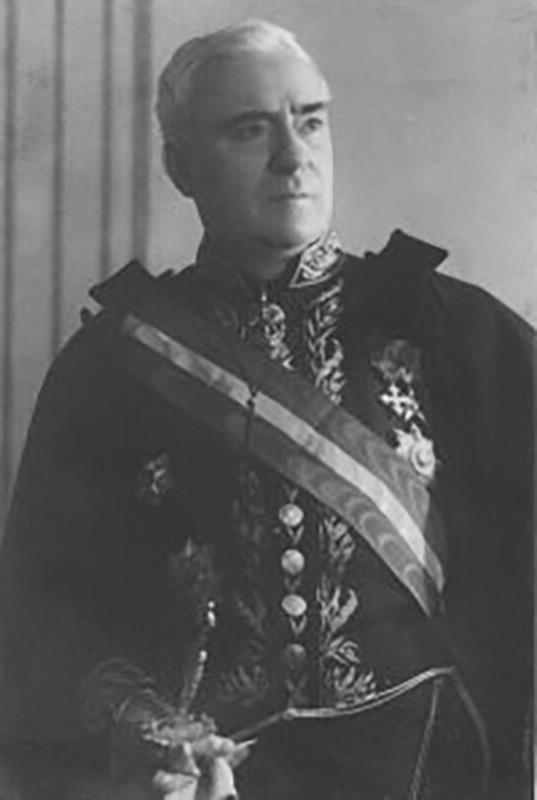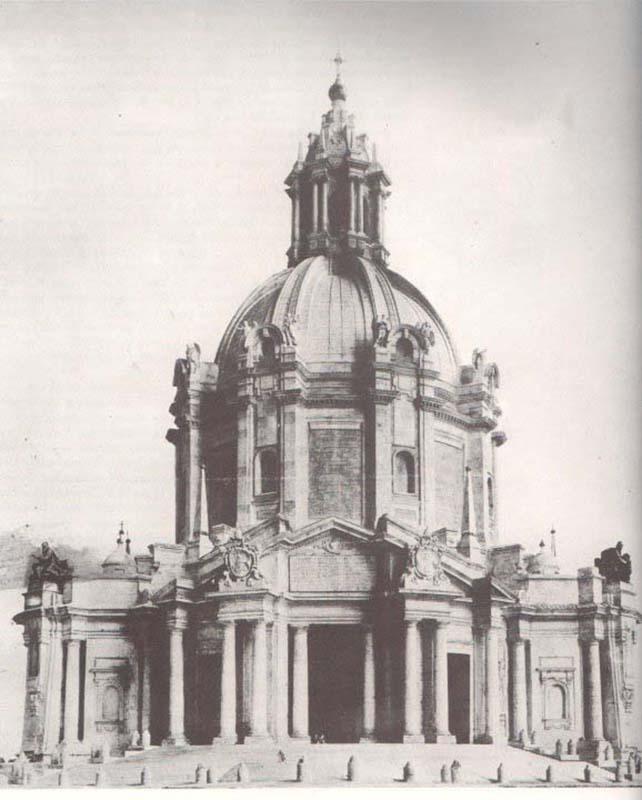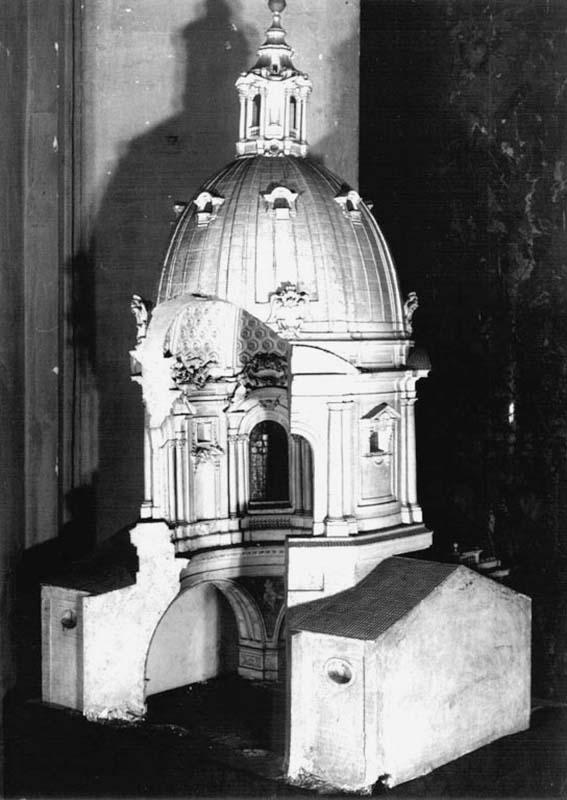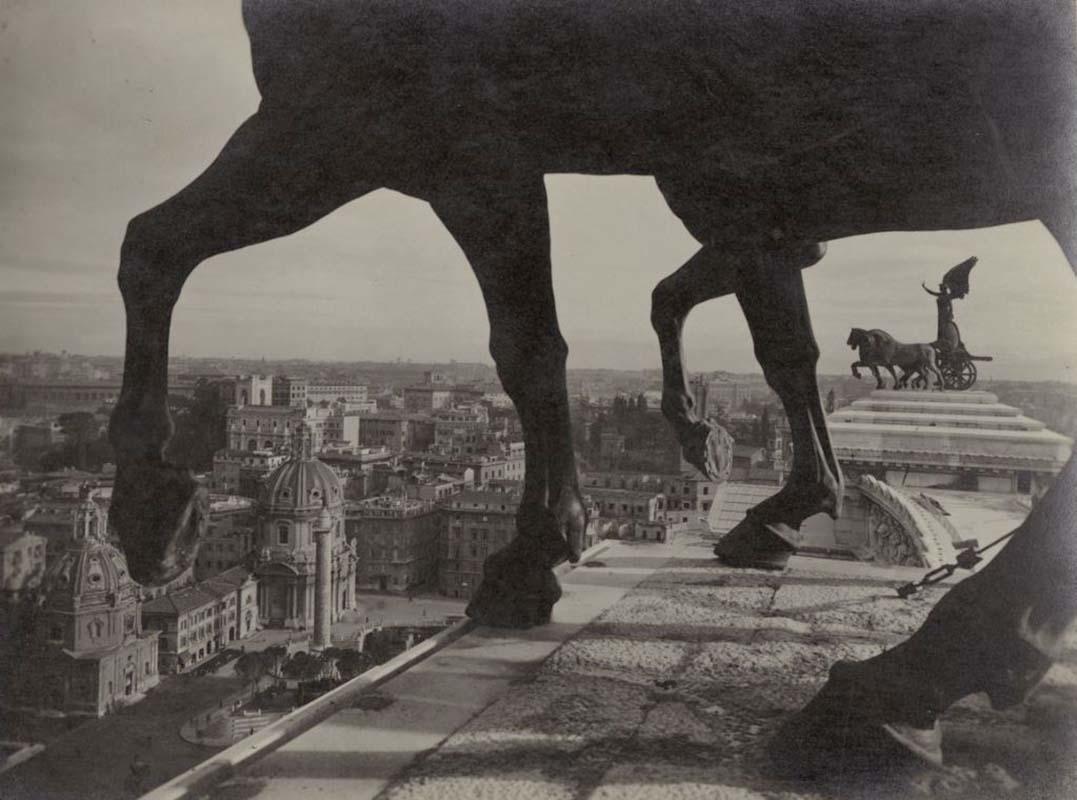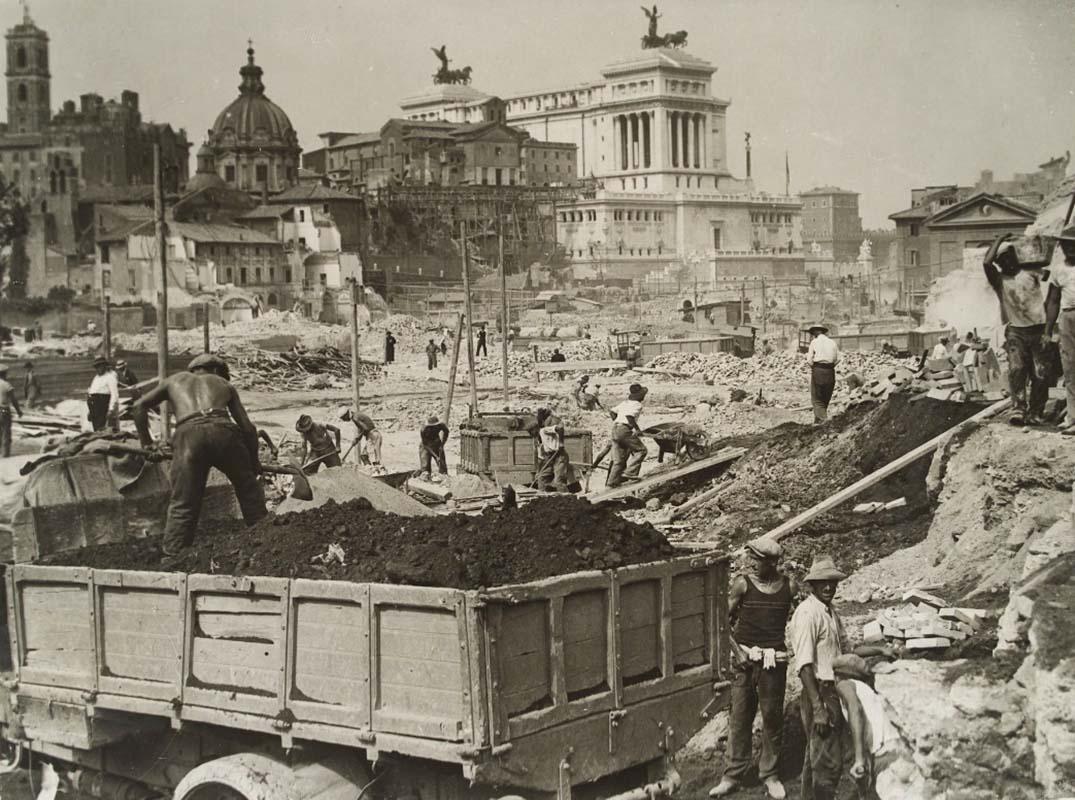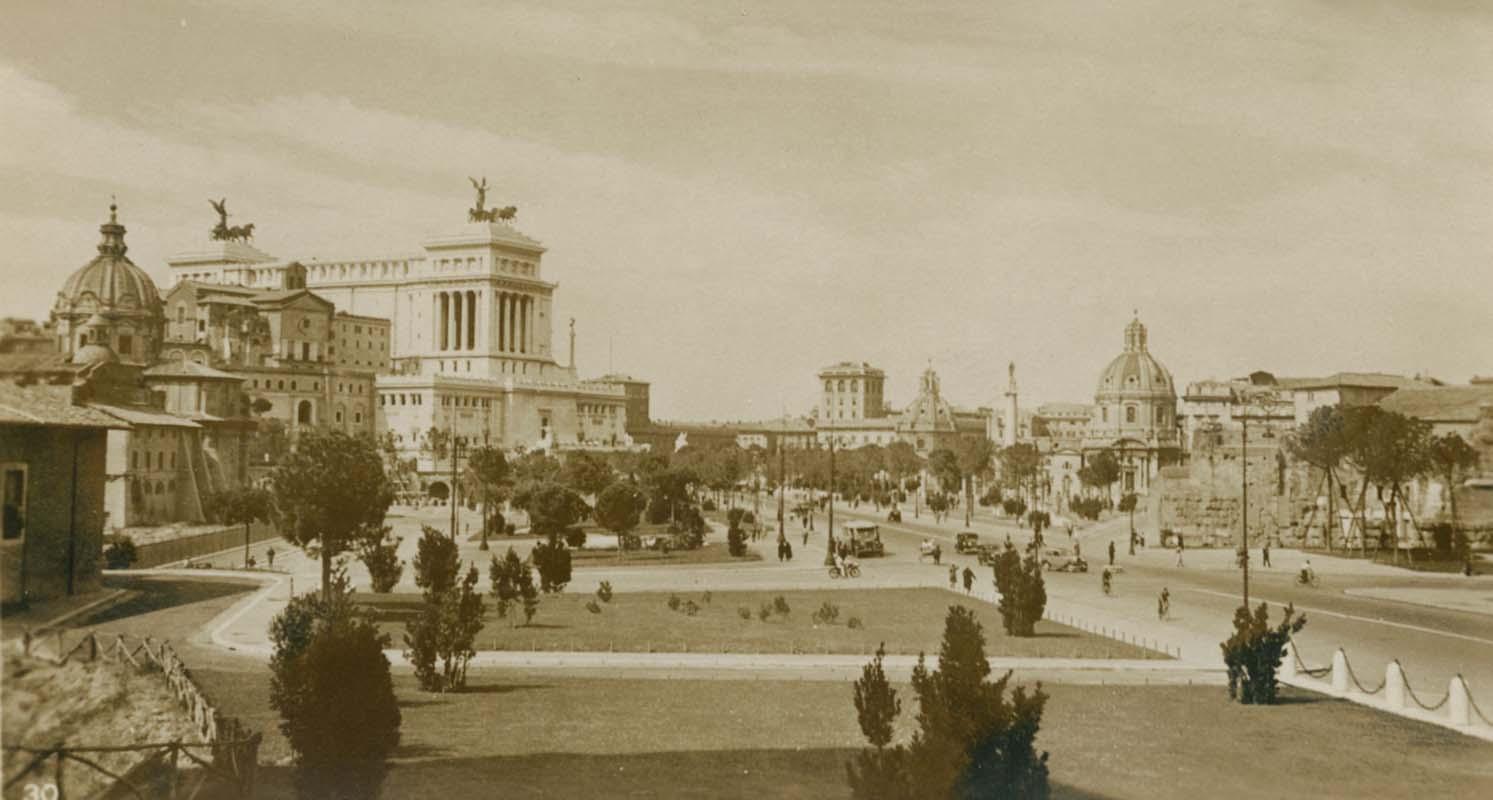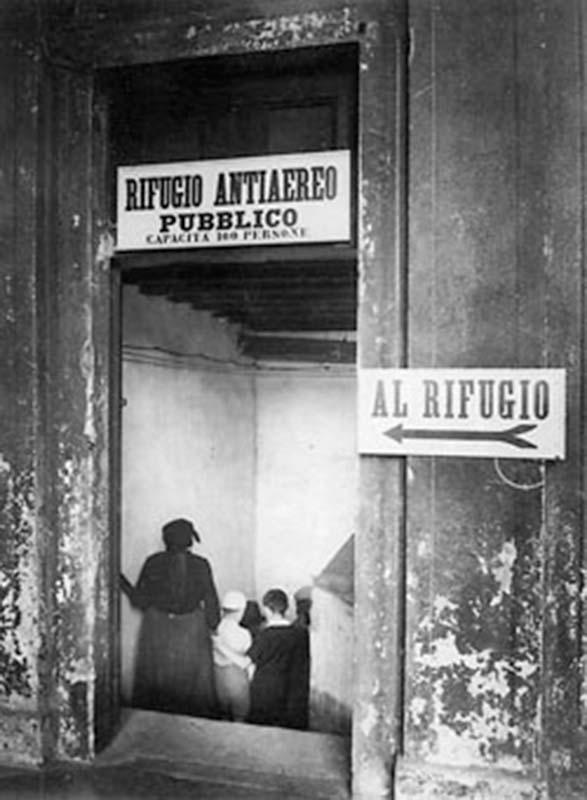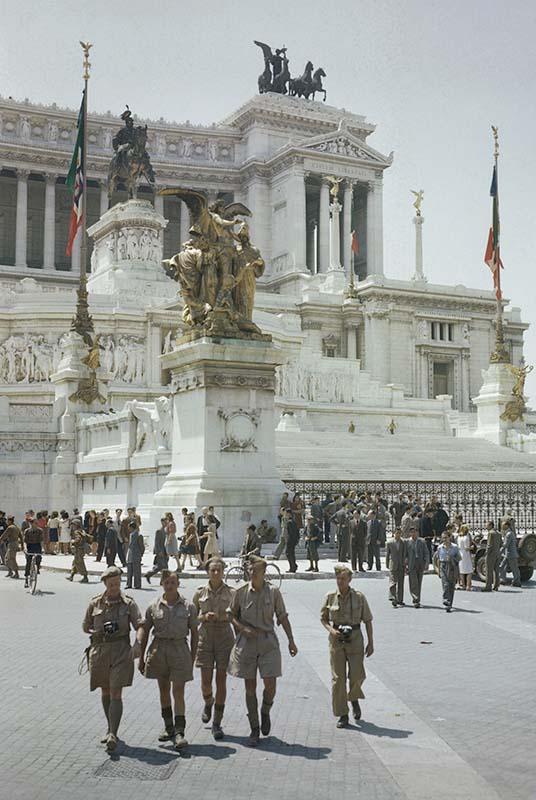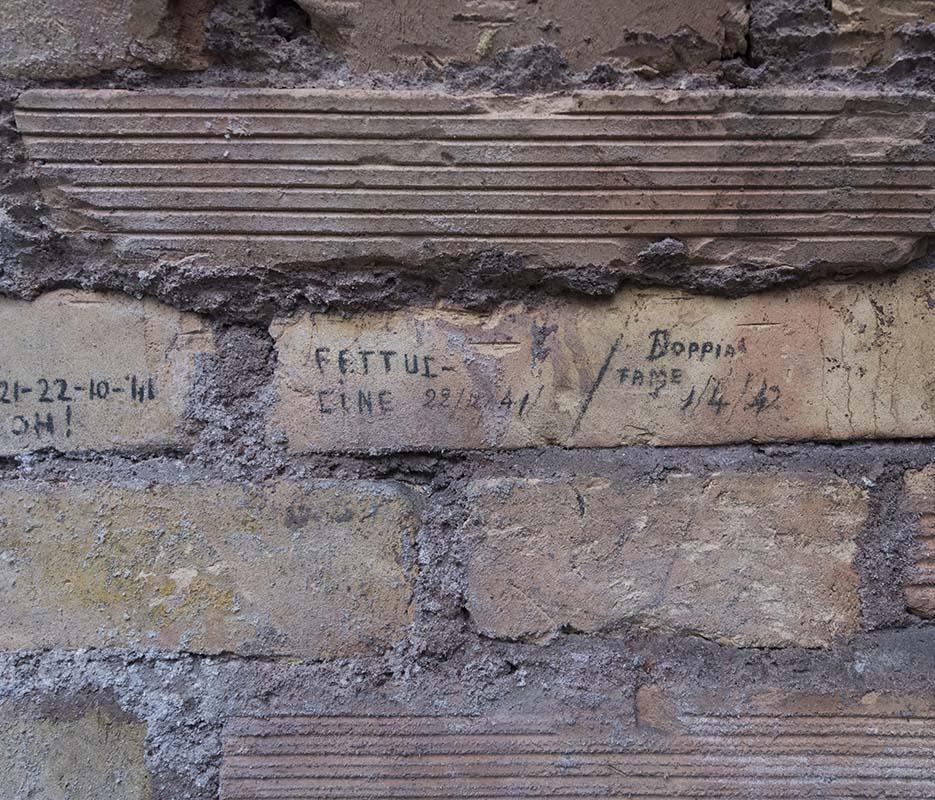The fascist period and the Second World War (1922-1945)
A stage for the regime, its rites and its protagonists, during the final war years, the Vittoriano protected the civil population of Rome in its basement
The fascist regime (1922-1943) appropriated the Vittoriano, fully grasping its architectural, artistic and scenography qualities, but transforming it into a cog in its rhetoric and propaganda machine. From a symbol of unity and liberty, the monument was reduced to being the backdrop for the military parades that took place along the via dell’Impero, today’s via dei Fori Imperiali, and for the speeches given by Benito Mussolini from the balcony of Palazzo Venezia.
In 1924, architect Armando Brasini (1879-1965) took on the position of artistic director of the Vittoriano, which he would maintain until 1939. Brasini, trained as a plasterer at the Institute of Fine Arts and at the school of the Industrial Art Museum, managed to establish himself as an architect already during the 1910’s.
His language, initially Liberty, had taken on a magniloquent and retrospective development after the war, that is, mainly directed towards the past, particularly to the Renaissance and the Baroque: this application is evident in the exhibition of the works recovered from Austria, set up in Palazzo Venezia in 1922 and in the project for the Basilica of the Immaculate Heart of Mary in Piazza Euclide, Rome.
Inside the Vittoriano, Brasini worked on two different styles. For the decorative and sculptural apparatus, the architect suggested minimal works, in fact limiting himself to finishing the works already set up previously. On 21st April 1925, the birth date of Rome, the inauguration of the statue depicting the Goddess Rome placed in the centre of the Altar of the Fatherland took place. In 1927 it was the turn of the Quadrigae of Liberty and Unity, placed on top of the Monument, over a hundred metres up.
Brasini's mark, on the other hand, went further for the architecture. The arrangement of the Tomb of the Unknown Soldier and, within the complex, the relative Sacellum and the setup of the Shrine of the Flags, can be ascribed to his drawings. Along the eastern side of the Monument, enhanced by the contextual construction of via dell' Impero, he developed a previous project by Manfredo Manfredi and Pio Piacentini, once a series of various problems had been solved, he built today's Imperial Forums’ Wing.
The Vittoriano also played a notable role in the final stages of the Second World War. Once the curtain had fallen on the triumphs of the regime and on the military parades, Rome was forced to face the threat of Allied bombing. The basement of the Monument then took on the function of an air-raid shelter. At the sound of the sirens, hundreds got used to running through its access doors, feeling protected by the rock above and by the very bulk of the building.
The shelter’s furnishings included rows of benches, a first aid post, the supply of drinking water, emergency exits and toilets. This dramatic phase can still be known today thanks to a series of original graffiti. "As hungry as a wolf”, "Twice as hungry" or "Fettuccine", are some of the epigraphs drawn by the citizens of Rome and found on the walls of the underground area.

